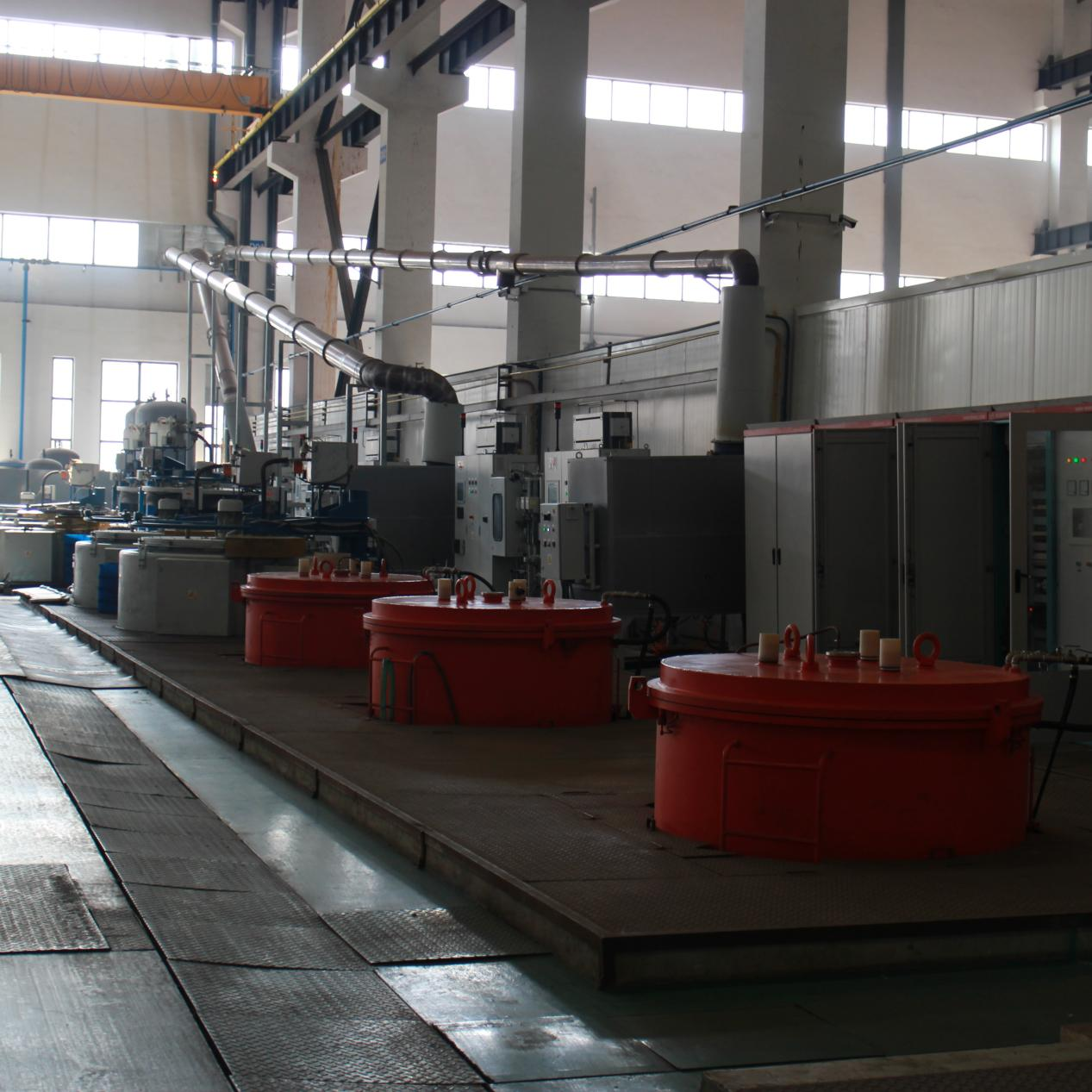
- English
- 简体中文
- Español
- Português
- русский
- Français
- 日本語
- Deutsch
- tiếng Việt
- Italiano
- Nederlands
- ภาษาไทย
- Polski
- 한국어
- Svenska
- magyar
- Malay
- বাংলা ভাষার
- Dansk
- Suomi
- हिन्दी
- Pilipino
- Türkçe
- Gaeilge
- العربية
- Indonesia
- Norsk
- تمل
- český
- ελληνικά
- український
- Javanese
- فارسی
- தமிழ்
- తెలుగు
- नेपाली
- Burmese
- български
- ລາວ
- Latine
- Қазақша
- Euskal
- Azərbaycan
- Slovenský jazyk
- Македонски
- Lietuvos
- Eesti Keel
- Română
- Slovenski
- मराठी
- Srpski језик
Everything You Should Know about Nitriding
2022-07-20
EJS produces many products with nitriding, including conical screw barrel, extruder barrel, injection molding barrel, parallel twin cylinder, twin screw barrel, injection barrel, feedscrew, planetary roller screw, rubber screw, screw elements, and many others.
Nitriding treatment is a chemical heat treatment process in which nitrogen atoms penetrated into the surface of the workpiece in a certain medium at a certain temperature. Nitrided products have excellent wear resistance, fatigue resistance, corrosion resistance and high temperature resistance.


Commonly used materials for nitriding
During the nitriding process, the aluminum, chromium, vanadium and molybdenum elements in traditional alloy steel materials can generate stable nitrides when they come into contact with the nascent nitrogen atoms, especially molybdenum elements, not only nitride elements, but also reduces the brittleness that occurs during nitriding. Elements in other alloy steels, such as nickel, copper, silicon, manganese, etc., do not contribute much to the nitriding characteristics.
Generally speaking, if there is one or more nitride forming elements in the steel, the effect after nitriding is relatively good. Among them, aluminum is the strongest nitride element, and the nitriding results with 0.85~1.5% aluminum are the best; if there is enough chromium content, good results can also be obtained; carbon steel without alloys, because of the resulting infiltration, the nitrogen layer is brittle and easily peeled off, making it unsuitable for nitriding steel.
Technical Process of Nitriding
1)Surface cleaning of parts before nitriding
Most parts can be nitrided immediately after degreasing by gas degreasing. Some parts also need to be cleaned with gasoline, but if polishing, grinding, polishing, etc. are used in the final processing method before nitriding, it may produce a surface layer that hinders nitriding, resulting in uneven nitriding after nitriding, causing defects such as bending. At this time, one of the following two methods should be used to remove the surface layer. The first method is to remove oil with gas before nitriding. The surface is then sandblasted with alumina powder (abrasive cleaning). The second method is to apply phosphate coating to the surface.
2)Exhaust air from nitriding furnace
Place the processed parts in a nitriding furnace and seal the furnace cover before heating, but the air must be removed from the furnace before 150 ︒C.
The main function of the air exhaust is to prevent the occurrence of explosive gas when ammonia gas is decomposed in contact with air, and to prevent the surface of the object from being oxidized. The gases used are ammonia and nitrogen.
3)Ammonia decomposition rate
Nitriding is carried out by contacting other alloying elements with nascent nitrogen, but the generation of nascent nitrogen is that the steel itself becomes a catalyst when ammonia gas contacts the heating steel, which promotes the decomposition of ammonia.
Although nitriding can be carried out under ammonia gas with various decomposition rates, the decomposition rate of 15-30% is generally adopted, with at least 4-10 hours according to different thickness of nitriding, and the processing temperature is kept at about 520 °C .
4)cooling down
Most industrial nitriding furnaces are equipped with heat exchangers, in order to rapidly cool down the heating furnace and the processed parts. That is, after the nitriding is completed, turn off the heating power, low the furnace temperature by about 50°C, and double ammonia flow, and then turn on the heat exchanger. At the same time, it is necessary to observe whether there are bubbles on the exhaust pipe to confirm the positive pressure in the furnace. When the ammonia gas becomes stabilized, reduce ammonia volume until the positive pressure in the furnace is achieved. When the furnace temperature drops to below 150°C and only by then, the furnace cover can be opened.
Currently, there are 3 leading types for nitriding treatment
- gas nitriding
- liquid nitriding
- Ion/Plasma nitriding
Below is the comparison of these 3 nitriding treatments:
| Contents Compared | Gas nitriding | Liquid nitriding | Ion/Plasma nitriding |
| Pollution to the environment | Heavy | Heavy | none |
| Necessity to install environmental protection facilities | required | required | unnecessary |
| Acceptance for urban industry | not acceptable | not acceptable | acceptable |
| Production cycle time | long | short | short |
| Ammonia consumption | Big | * | very little |
| Energy consumption | Big | Small | Small |
| Production cost | higher | high | Low |
| Equipment investment | low | low | high |
| Complexity of device | Simple | Simple | more complicated |
| Craftsmanship required | YES | YES | YES |
| Controlability ofstructure of the nitride layer | not controllable | not controllable | controllable |
| Nitriding performance | good | good | excellent |
| Acceptable materials for nitriding | many | many | more |
| Nitriding effect on stainless steel | difficult for handling | easy handling | easiest handling |
| Deformation of the work piece | big | big | small |
| Protection ofnon-nitriding surfaces | complicated | complicated | easy |
| Cleanliness required for work piece | high | high | higher |
| Requirements for the operator | high | high | high |
| On-site environment for operators | poor | poor | good |
| Operator's labor strength | low labor strength | low labor strength | lower labor strength |
What do we miss about nitriding?
What information will you share with us about nitriding?
What products do you use nitriding?
Please be free to contact EJS TEAM---the more we work together, the more we grow together.



